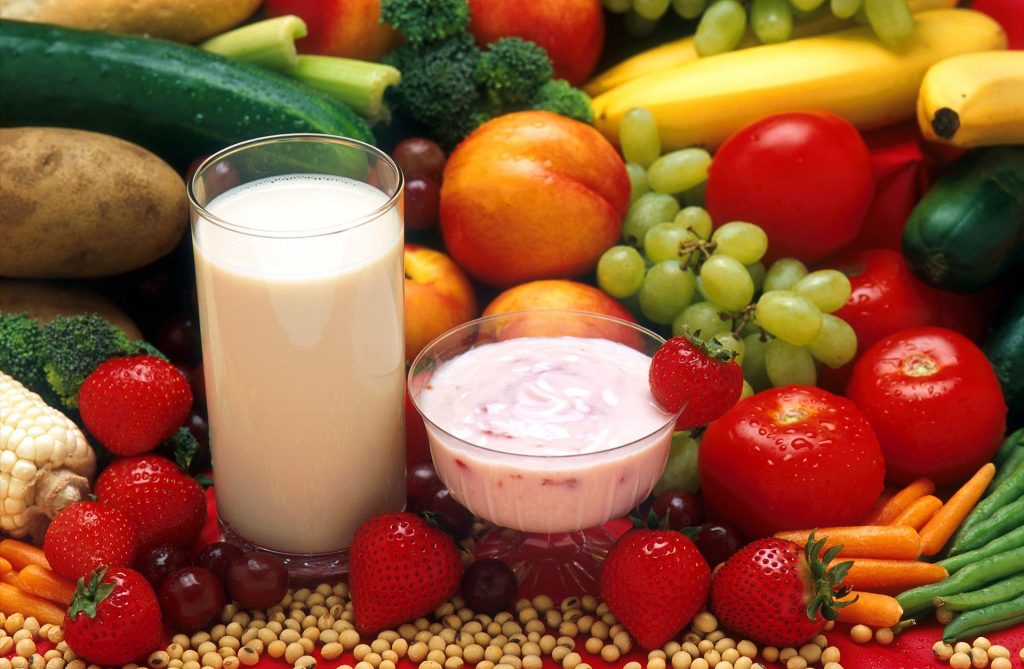 Digestion of the α-casein protein from milk and gluten protein from wheat results in the production of a number of peptides. Some of these peptide have been suggested to have opioid activity. Opioids are a group of chemicals that include heroin and morphine. These chemicals have certain pain relieving effects, and may be involved in other physiological activities such as the regulation of food intake. The brain can produce its own opioids and these are known to be involved in the regulation of appetite and may have pain relieving effects. Synthetic opioids likely replicate these effects using the natural opioid receptors. Exogenous opioids are highly addictive and so the presence of structurally similar compounds in digested milk and wheat has lead to speculation that these foods could be addictive. Anecdotal evidence suggests that both milk and wheat can be addictive in some individuals, but the scientific evidence for addictive properties to milk and wheat are less clear.
Digestion of the α-casein protein from milk and gluten protein from wheat results in the production of a number of peptides. Some of these peptide have been suggested to have opioid activity. Opioids are a group of chemicals that include heroin and morphine. These chemicals have certain pain relieving effects, and may be involved in other physiological activities such as the regulation of food intake. The brain can produce its own opioids and these are known to be involved in the regulation of appetite and may have pain relieving effects. Synthetic opioids likely replicate these effects using the natural opioid receptors. Exogenous opioids are highly addictive and so the presence of structurally similar compounds in digested milk and wheat has lead to speculation that these foods could be addictive. Anecdotal evidence suggests that both milk and wheat can be addictive in some individuals, but the scientific evidence for addictive properties to milk and wheat are less clear.

Wheat digestion results in the production of gluten peptides and some of these may have opioid activity.
Some studies have used bench assay to determine the opioid activity of digests of milk and wheat. Some of these assay do show positive results for these digests, suggesting that the structural similarities between the α-casein and gluten peptides and endogenous opioids may be enough to cause physiological effects. However, bench assays are not a good model for the physiological systems in whole animals. In rat experiments, the results have been somewhat inconsistent. For example the presence of β-casein derived opioid from cow’s milk may alter gastrointestinal transit time, suggesting a biological activity for the compounds. In studies investigating addiction, the opioid derived from milk however, do not appear to be addictive, at least in rats. It is likely that the opioid derived from certain foods may have biological activity in humans, but there is not enough evidence to suggest they are addictive. Absence of proof however is not proof of absence, and so the possibility of addiction remains.

Opioids in milk may serve a useful biological function in infant development. It therefore suggests that some species cross over between cow’s milk and humans may occur and that cow’s milk opioids may have biological activity in humans.
Dr Robert Barrington’s Nutritional Comments: opioids in digested milk are likely there for physiological reasons. For example, some evidence suggests that they may be required for social development in infant mammals. In addition, evidence also shows that analgesia and comforting effects are derived from the natural opioids in mammalian milk. It stands to reason that some crossover between species may occur, and as such it is no surprise that cow’s milk may contain opioid activity in humans. This would fit perfectly with the known biological role for milk, which is not just a food, but a way of the mother transmitting other important factors to the growing infant. That the gluten in wheat could be addictive due to the opioids present in the digested protein is more interesting as it is not clear this has a specific biological role. However, opioid-like chemicals are found in many foods and so it should not be surprising that wheat contains such chemicals. Their role in humans however is not clear.
RdB
